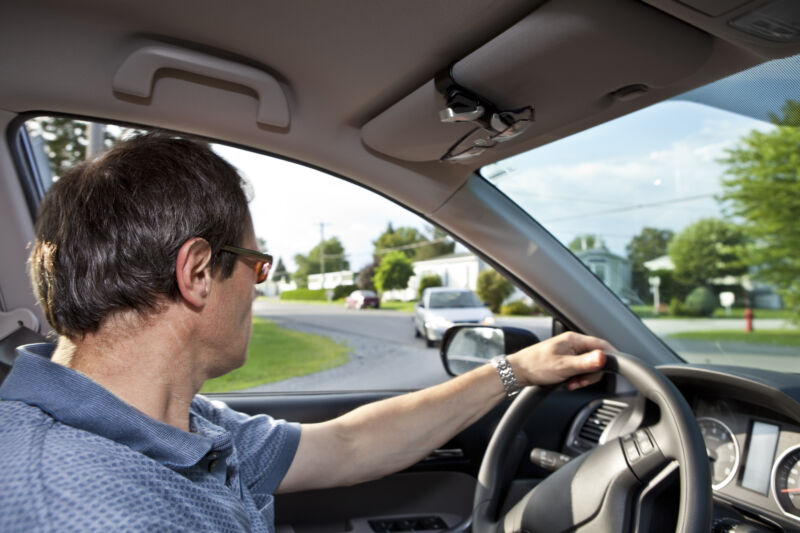
ImageegamI/Getty Images
It’s a dangerous time to be on American roads, and that’s especially true if you’re on foot.
Pedestrian deaths on our roads went up by more than 50 percent in a decade, and it looks like last year may have been even worse than 2020. The problem is complex, as road design, poor standards of driving training, and inadequate enforcement of existing traffic laws all contribute to the death toll.
But a new study by the Insurance Institute for Highway Safety (IIHS) has figured out why drivers of some types of vehicles are disproportionately more likely to hit pedestrians. Previous research has shown that cars are much safer for pedestrians than light truck vehicles, a catch-all category that includes SUVs, pickups, and vans (mini- or otherwise). And there has been speculation that the high fronts of these vehicles are more likely to mangle a pedestrian.
The IIHS study identifies another factor. IIHS Senior Transportation Engineer Wen Hu and IIHS Vice President of Research Jessica Cicchino looked at crash data from North Carolina (from 2010 to 2018) and data from the national Fatality Analysis Reporting System, or FARS, (from 2014 to 2018) to try to understand the problem.
North Carolina
The data from North Carolina (which excluded non-passenger vehicles) showed, perhaps unsurprisingly, that 63.6 percent of the 5,505 crashes involving a single vehicle and a pedestrian at intersections happened at crosswalks. The majority of those accidents—37.6 percent—occurred when the vehicle was turning.
And the data showed that drivers of pickups, minivans, large vans, and SUVs were all more likely to hit a pedestrian when making a left turn through a crosswalk at an intersection compared to someone driving a car. But drivers of light truck vehicles were no more or less likely to hit a pedestrian than the driver of a car in other scenarios at intersections (a vehicle driving straight through a crosswalk, a vehicle turning right through a crosswalk, or pedestrians dashing out into the street).
In 7,628 non-intersection crashes, drivers of minivans, large vans, pickups, and SUVs were more likely to hit someone walking along the roadway than drivers of cars, with pickups having the highest likelihood.
FARS
Between 2014 and 2018, FARS recorded 5,797 fatal intersection crashes involving a single passenger vehicle and a single pedestrian, with another 14,148 occurring at non-intersection locations.
At intersections, the FARS data showed a higher percentage of crashes that involved a single pedestrian crossing the roadway being killed by a driver who was not turning (53.9 percent), followed by a single pedestrian killed crossing the road by a driver turning. And of those turning crashes, 75.5 percent happened during left turns. Here, the data showed that light truck vehicles were heavily overrepresented in left-turn crashes. Drivers of pickup trucks and SUVs also had significantly higher odds than cars or minivans of killing a pedestrian while traveling straight or turning right through a crosswalk intersection.
For fatal non-intersection crashes with pedestrians, the nationwide data showed the same thing as North Carolina—crosswalks were the most deadly for pedestrians, followed by people walking or running along the roadway. Again, drivers of pickups and SUVs had significantly higher odds of killing a pedestrian walking or running along the roadway than drivers of cars, and there was no difference between vehicle types in crashes that killed a pedestrian who dashed out into the road.
Why?
IIHS identifies a potential culprit—ever larger and thicker A-pillars (the posts that frame the windshield and support the front of the roof). “It’s possible that the size, shape, or location of the A-pillars that support the roof on either side of the windshield could make it harder for drivers of these larger vehicles to see crossing pedestrians when they are turning,” said Hu.
Ironically, the problem may be partly of IIHS’ making. When Ars visited IIHS’s crash-testing center in 2019, the organization was proud of the fact that the auto industry had responded to its tougher rollover test. In order to protect occupants during a rollover, OEMs had to strengthen their A-pillars in order to pass. That resulted in safer cars for their occupants, but at the cost of worse visibility—and perhaps more dead pedestrians.
